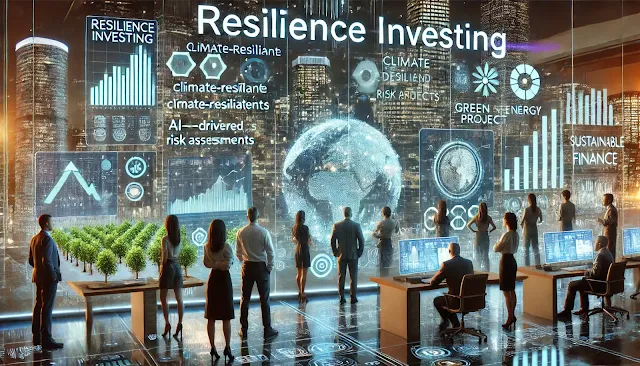In recent years, the financial world has witnessed a paradigm shift. What was once termed ESG (Environmental, Social, and Governance) investing has evolved into a more encompassing concept: Resilience Investing. This approach not only considers traditional ESG metrics but also emphasizes the capacity of investments to withstand and adapt to the multifaceted challenges posed by climate change, economic disruptions, and societal shifts. As global uncertainties escalate, resilience investing emerges as a pivotal strategy for future-proofing portfolios and promoting sustainable development.
The Evolution from ESG to Resilience
The ESG framework has been instrumental in guiding investors toward more responsible and ethical investment choices. However, the increasing frequency of extreme weather events, geopolitical tensions, and economic fluctuations has highlighted the need for a more robust investment paradigm. Resilience investing addresses this gap by focusing on the adaptability and durability of assets in the face of unforeseen challenges. This shift underscores a proactive approach, aiming not just to mitigate risks but to enhance the inherent strength of investments.
Key Components of Resilience Investing
-
Climate Adaptation and Mitigation: Investments are directed toward projects and technologies that reduce greenhouse gas emissions, promote renewable energy, and support infrastructure capable of withstanding climatic extremes. For instance, enhancing port facilities to endure rising sea levels exemplifies resilience-focused infrastructure development.
-
Economic Diversification: Allocating resources to sectors and regions less susceptible to global shocks ensures a balanced portfolio. This includes investing in emerging markets with growth potential and industries that offer essential services irrespective of economic cycles.
-
Social Equity and Community Engagement: Supporting initiatives that bolster community resilience, such as affordable housing, healthcare access, and education, ensures societal stability. Investments in these areas not only yield financial returns but also fortify the social fabric against disruptions.
-
Technological Innovation: Backing advancements in technology that enhance adaptability, such as artificial intelligence for disaster prediction or blockchain for transparent supply chains, positions portfolios at the forefront of resilience.
The Business Case for Resilience Investing
Beyond ethical considerations, resilience investing presents compelling financial incentives:
-
Risk Mitigation: Assets designed to endure environmental and economic shocks are less likely to suffer significant value depreciation during crises.
-
Regulatory Alignment: As governments worldwide tighten regulations on environmental and social governance, resilience-focused investments are better positioned to comply, avoiding potential penalties.
-
Market Competitiveness: Companies that prioritize resilience are often more agile, innovative, and capable of capturing emerging market opportunities, leading to sustained profitability.
Challenges and Criticisms
While resilience investing offers numerous benefits, it is not without challenges:
-
Measurement Difficulties: Quantifying resilience is complex, given the multifaceted nature of risks and the lack of standardized metrics.
-
Short-Term Costs: Implementing resilience strategies may entail higher upfront costs, deterring investors focused on immediate returns.
-
Greenwashing Risks: Without clear definitions, some entities might mislabel traditional investments as "resilient," misleading stakeholders.
Case Studies in Resilience Investing
-
Renewable Energy Expansion: Investments in solar and wind energy projects have surged, driven by their capacity to provide sustainable power amidst fossil fuel volatility.
-
Climate-Resilient Agriculture: Funding agricultural practices that withstand extreme weather ensures food security and stable returns.
-
Sustainable Urban Development: Developing smart cities with resilient infrastructure attracts investors aiming for long-term stability.
The Road Ahead
As global challenges become more intricate, the financial sector's role in fostering resilience is paramount. Investors, policymakers, and corporations must collaborate to establish frameworks that promote and standardize resilience investing. This collective effort will not only safeguard assets but also contribute to a more sustainable and equitable global economy.
In conclusion, resilience investing represents a transformative approach in sustainable finance, aligning profitability with the broader imperative of adaptability in an ever-changing world.

















0 Comments